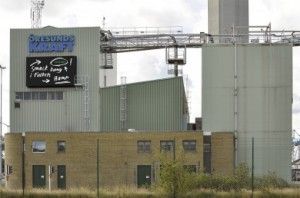Responding to local needs and aspirations, and making the most of local potential, be it people or physical assets, are major current concerns of place-making initiatives in Britain and outside. However, plans that explicitly integrate the development of social capital together with livable and vibrant public spaces are few and far between. The reason is that much of the focus of renewal has, in the past, shifted away from the idea of place as a functioning whole towards a concentration on short-term solutions, quick, mainly cosmetic, forms of regeneration and a marketisation of local images and identities.
For the best part of two decades notions such as the experience economy, creative cities and globalisation have been used to define new modes of production and consumption within a ‘new economy’. Now that such a model of development has slowly, but surely, imploded, there is an opportunity for fresh thinking and experimentation with innovative, people-centred, culturally sensitive, joined-up approaches. Translated into policy this means learning lessons from the past about where policy can or cannot make a difference in helping human potential to flourish.
Thinking and planning culturally is a slow process of co-creation, the outcome of which can seldom be guaranteed or preordained in advance. This is because every place has its own culture, social and economic dynamic and distinctiveness. Understanding such deep structures is a critical first step (I call this ‘cultural DNA mapping’), which needs to be complemented by the implementation of ad-hoc forms of collaboration and partnership between different levels of local government, together with community leadership on the ground.
I have used this approach successfully for more than twenty years. Below is a selection of projects developed by my Noema team of cultural planners in Sweden, where an understanding of this approach is relatively advanced.
In the Södra Smaland region of Sweden, for example, DNA mapping was used to tackle the problems caused by storm Güdrun in 2005. The storm — which laid waste to the locality’s forests, causing widespread damage — prompted local people to try and re-imagine a new role for this southern region of Sweden. As a result of a six-month mapping, the creation of a Storm House was proposed within a development framework of strategic long-, medium- and short-term actions.
When built, the Storm House will combine visitor-attraction and research spaces, which will sit in the forest in the area affected by the storm. By turning a problem into an opportunity the centre will act as a catalyst for other initiatives (to be developed by the local university, new media and high-tech companies) dedicated to the study of extreme weather patterns, and the potential entrepreneurial spin-offs in the fields of eco-sustainability and quality of life.
 In the building, visitors will be able experience what it means to be in a storm (in a dedicated room with 3D projections, sound effects etc), while researchers will learn about the effects of global warming, the change in weather patterns, and will also be able to experiment with cost effective, alternative, sources of energy. The Storm House proposal fits into the context of a local dedication to the use of renewable resources and a cult of outdoor living. By mobilizing tangible and intangible resources (there are more than 200 IT small enterprises and a well-developed SciencePark already working on innovative solutions for the environment) this proposal could lay the foundations for new economic functions for this region.
In the building, visitors will be able experience what it means to be in a storm (in a dedicated room with 3D projections, sound effects etc), while researchers will learn about the effects of global warming, the change in weather patterns, and will also be able to experiment with cost effective, alternative, sources of energy. The Storm House proposal fits into the context of a local dedication to the use of renewable resources and a cult of outdoor living. By mobilizing tangible and intangible resources (there are more than 200 IT small enterprises and a well-developed SciencePark already working on innovative solutions for the environment) this proposal could lay the foundations for new economic functions for this region.
In Landskrona (a small city in rural Skäne also known as ‘Sweden’s allotment capital’) a number of initiatives aimed at improving social harmony and intercultural dialogue have been developed by deregulating the allocation of city-centre-based historic allotments, and getting people from diverse ethnic communities to use and develop their own plots. In addition, vacant buildings in the city centre are now being considered for alternative uses, some of which will be for commercial purposes (e.g. to house ethnic businesses or specialist small scale retail) and as community meeting places. Such initiatives respond to a need by the diverse ethnic communities in the city to participate more in the local economy and civic life. As urbanist Leonie Sandercock suggests, cultures grow through the everyday practices of social interaction and all contain multiple differences within themselves that are continually being re-negotiated and recognised. Such shifts in perception are encouraging those in charge of economic development at municipal level to actively mobilize cultural diversity as a key asset for generating opportunities in this city, notoriously suspicious of outsiders.
Still in Sweden, this time in Helsingborg, a medium sized yet strategically important city positioned at the narrowest part of the Öresund strait facing Denmark, the largest public sector-led urban regeneration initiative in modern Sweden is in its fifth year of development. In 2008 the municipality launched a design competition for the central part of the city, which includes a section of the harbour and two large former industrial sites nearby. From the beginning, a team of experts and advisors (‘city mentors’) from diverse backgrounds (including community planners, artists, urbanists, creative and social entrepreneurs, health professionals, the university) was set up to help the city stakeholders (from planning, transportation & infrastructure, housing, environment, culture, welfare and economic development) with the design of the brief for the competition.
Once the winning architects and designers were appointed the ‘city mentors’ group was kept on to work on the development of a holistic and
inclusive vision for how Helsingborg should change over the next twenty years. In addition, a number of creative, participatory interventions — such as street parties, candlelight street dinners, pop-up community gardens, temporary open air swimming spaces, fishing competitions, the squatting of a warehouse for the Smack Bang festival of ideas — were used to engage in a meaningful way with the culture and lives of local communities across the city. Such a long-term view — coupled with an awareness that traditional solutions to the problems of regenerating vast urban areas aren’t working anymore and willingness by the public sector to take calculated risks — have made fertile ground for putting in place an incremental model of development unique in Sweden (and rare elsewhere).
More generally, collaborative ‘laboratories in real-scale’ — such as those discussed in this article — challenge traditional forms of top-down planning in favour of imaginative forms of localised, crowd-sourced, culturally sensitive planning. Of course, this is only part of the story, only a glimpse of what is possible when the key values of planning culturally are mobilised.

